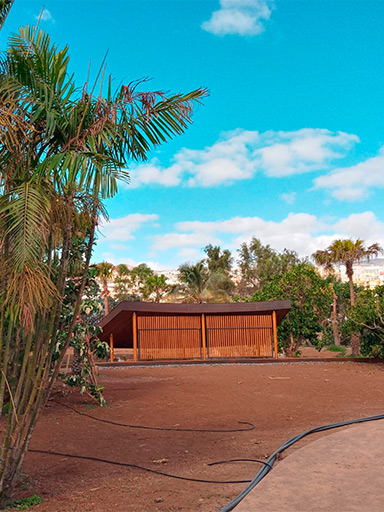- A lake has been created along with the new structure, improvements that have been made with the collaboration of Fundación Cepsa
- Their inauguration is planned for December, coinciding with the commemoration of the first 10 years of the Santa Cruz de Tenerife botanical garden
The mayor of Santa Cruz, José Manuel Bermúdez, points out that "thanks to these works, bird watching can become a new attraction for this botanical garden, a sustainable space that has received international awards on several occasions,” highlighting the fact that "the Palmetum is a symbol for Santa Cruz, which, in these ten years, has already been visited by more than 500,000 people."
Belen Machado, responsible for Fundación Cepsa in the Canary Islands, celebrated the upcoming culmination of the works that contribute to the foundation’s objectives. "Our foundation is committed to the conservation and recovery of biodiversity through various actions in Tenerife’s capital, including several initiatives in the Palmetum, such as this new lake with a bird blind, through which we hope to promote the development of biodiversity by expanding the botanical collection and attracting birds. It will also serve as another space for environmental awareness and dissemination, which will undoubtedly attract the attention of citizens due to the interest of its content.”
Councilor for Infrastructures and the Maritime Park and Palmetum, Javier Rivero, pointed out that, with these improvements, which are part of a larger project to expand the botanical garden, "we are confident that we will attract new visitors, increasing the our current daily average which surpasses 230 visitors a day, although on some occasions we have received more than 500 people in one day.”
With this new area, the Palmetum responds to requests from visitors, which have been increasing in number year after year. Here they will be able to enjoy more paths and a lake, which will expand the visiting area in the garden, in addition to the mentioned blind for bird watching, a concealing structure from which to observe and/or photograph wild birds without disturbing them, and therefore without interfering with their natural behavior.
Since opening 10 years ago, the number of birds nesting or using the garden during migration has exceeded 90, making this observation point an even more attractive feature when visiting the Palmetum.
In the coming days, plantation will begin to provide coverage for the structure, so that visitors can observe birds without them being aware of their presence. In this new plantation, we can find interesting species such as araucarias, palm trees, different types of banana trees, breadfruit trees, and dwarf coconut trees.

